
We’re fast approaching the shorter days with more darkness about. I had to switch on the lights when I started my day at 7am this morning, and the other evening it was nearly dark walking home around 7pm. Despite it being much cooler, around 5-10 degrees Celsius, there are still plenty insects to be seen and I found myself surrounded by bats out hunting them. Common Pipistrelle (Pipistrellus pipistrellus) are the smallest bats in the UK and they prefer open country with isolated trees or woodland. You do find them in villages and towns hunting insects attracted by street lights. They must have amazing navigational skills not to fly into us. Sometimes they are so close you can feel the air move as they pass.
The harvesting is over and the fields have already been re-sown with winter oil seed rape which are all within easy distance of the apiary. As part of my forward planning, I shall be getting ready 2-3 supers per colony for when that crop flowers in April/May. That means making sure that I have the frames and foundation in store but I will not be putting them together just yet. With a bit of luck and organising I shall not be putting them together myself at all!!! I need to order up more jars and labels too. I’ve got a couple of new label designs to try out.
It’s time to get a new extractor having worked my 3-frame manual tangential extractor for the last 16 years, but with only a handful of productive colonies. I need to increase to around 15 productive colonies to meet the local demand for honey. So, I’m currently researching the new extractor and asking friends about the pros and cons of theirs. Radial or tangential is the question. Electrically driven is not in doubt.
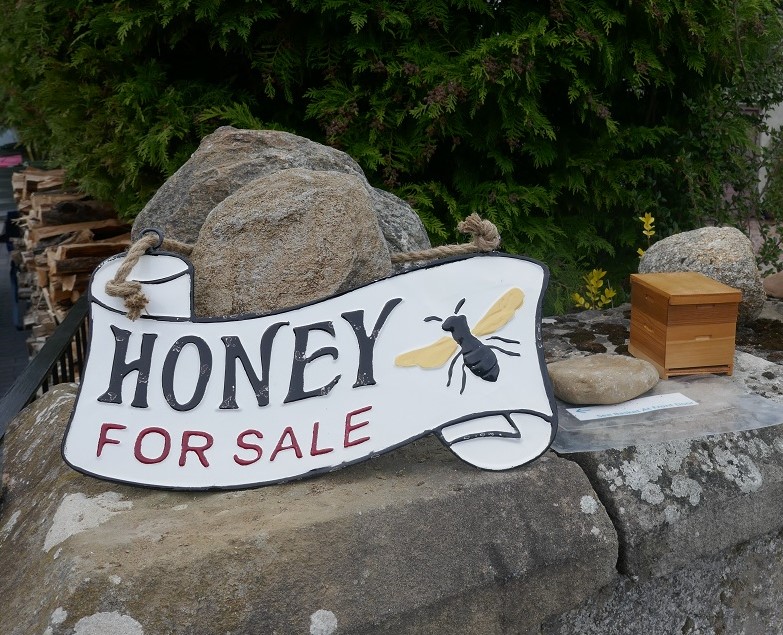
My sign attracts a lot of attention and yesterday the parcel delivery person bringing my Lands’ End sale goods bought 3 jars of honey. In the evening a local family came past to buy 2 more. I only process small batches of around 20-25 lbs at a time and had the latest jars lined up on the window ledge waiting for labels so the children had fun putting them on their two jars at the front door as darkness fell. I bought the sign from my favourite bee supply shop which I wish was closer to here than the US. http://hudsonvalleybeesupply.com/
Still Foraging.
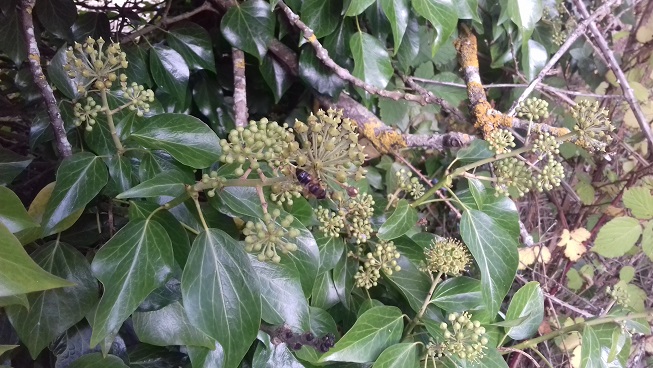
Himalayan balsam must be one of the longest flowering plants around here and on dry days the bees are still down at the river working it. The ivy is attracting a lot of attention too from all sorts of insects though hover flies seem to dominate.
Wasps.
Queen wasps are searching for an over-wintering site and I’ve had a couple scouting around inside the house. Yesterday I saw one beside me on a pile of felled logs in a forest exploring the bark for a suitable spot. I took the day off from studying for the National Diploma in Beekeeping exams to visit beekeeping friends after shopping in town. It was a spur of the moment decision having been at the garden centre nearby to get a cheerful seasonal pot plant as an antidote to darkness. Having an open invitation to visit anytime, I set off up the rutted road to Christine and Stewart’s place at the end of the track looking down over an autumn coloured valley to the Moray coast. Of course, I didn’t bring my camera this time, rats!
Well, the garden was a riot of colour with large blue Monkshood in the front garden, and open- flowered pollinator-friendly dahlias at the side of the house. On one side of a shed, the wall was covered in Boston ivy just past its best, according to Stewart, but never-the-less magnificent in golden yellows, orange, amber and ruby reds. The old fishing boat was still full of yellow Rudbeckia or cone flower.

Honey House.
You could smell the heather moors the moment Stewart opened the door to their honey house which was full of supers waiting to be extracted. They had a bumper crop of heather honey this year with shallow frames so heavy I could hardly lift one easily. Perfectly capped with ivory coloured wax, the combs will be crushed up and spun in his new gadget. Like most beekeepers, Stewart processes small batches at a time to keep the product fresh and looking good in the jars. He stores spun/extracted honey in 30-40lb food grade containers and prefers soft-set heather honey which he stirs later to break up crystal formation. It is truly delicious this year and I can vouch for that. Just breathing in the aroma takes me up onto the purple moors on a warm August day. The heather was spectacular this year. Some old timers say it was the best in their lifetimes, so far.
I’d been curious to see Stewart’s new spinner for some time. He is selling his heather press which is hard work to operate and leaves a lot of honey remaining in the wax. Heather honey is full of colloidal proteins giving it a gel-like consistency until stirred. It is called thixotropic honey and is impossible to extract unless you agitate each cell and extract in a tangential extractor within 15 minutes. Otherwise it quickly reverts to being an immovable gel. Traditionally heather (Calluna vugaris) or ling honey is pressed in a heather press.
Stewart bought this well-made German clothes spinner on the internet and is very pleased with it. The crushed comb is placed in a linen bag or scrim and dropped into the spinner. He prods it with a dedicated stick to get an even distribution and the remining wax is almost dry which is a serious advantage over traditionally pressed wax. It’s also possible to spin wax cappings in this machine. It is easy to clean and not expensive in the scheme of things.
Back to Wasps.
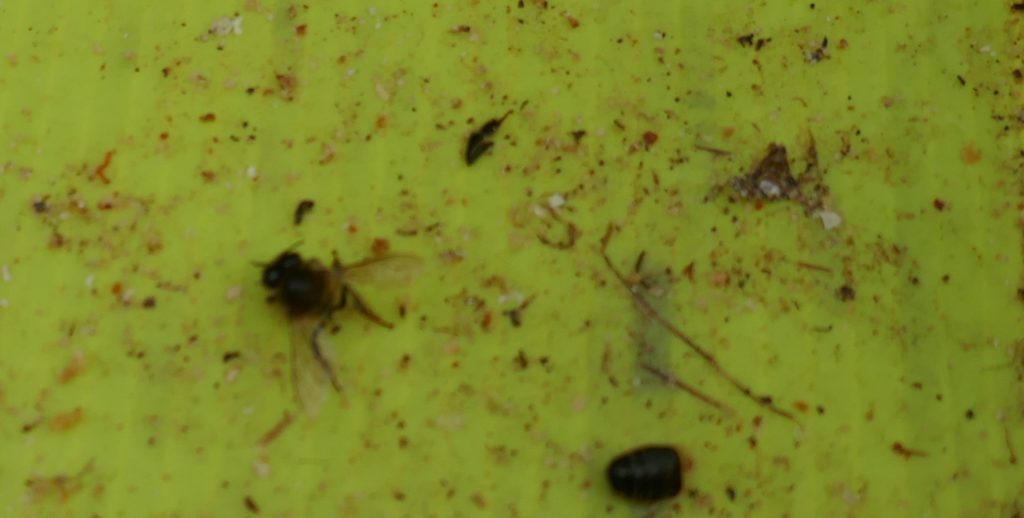
I’ve never actually seen wasps dismembering a bee but I believe that they are the culprits. They like to suck out the nectar from the bee honey crop. It is actually quite unpleasant to find a bee crawling about without its abdomen. I believe that honey bees don’t feel pain and I truly hope not. They can remain mobile for some time in this state. In fact, if a bee is beheaded it can also move around because the tiny brain housed in the head is only responsible for the working of mouthparts, eyes and antennae. The thorax houses the main ganglion, of seven ganglia, that controls the nervous system and enables leg movements. I know this from experience because I once found a headless bee walking about and when I crushed its thorax it stopped moving. I’ve dissected out the ganglia which look a bit like my drawing but are composed of a network of white plastic looking strands around fragile lacey ganglia.

Apart from this damage to isolated bees, wasps have not overpowered any colonies or nuclei this year and their season is soon over thankfully.
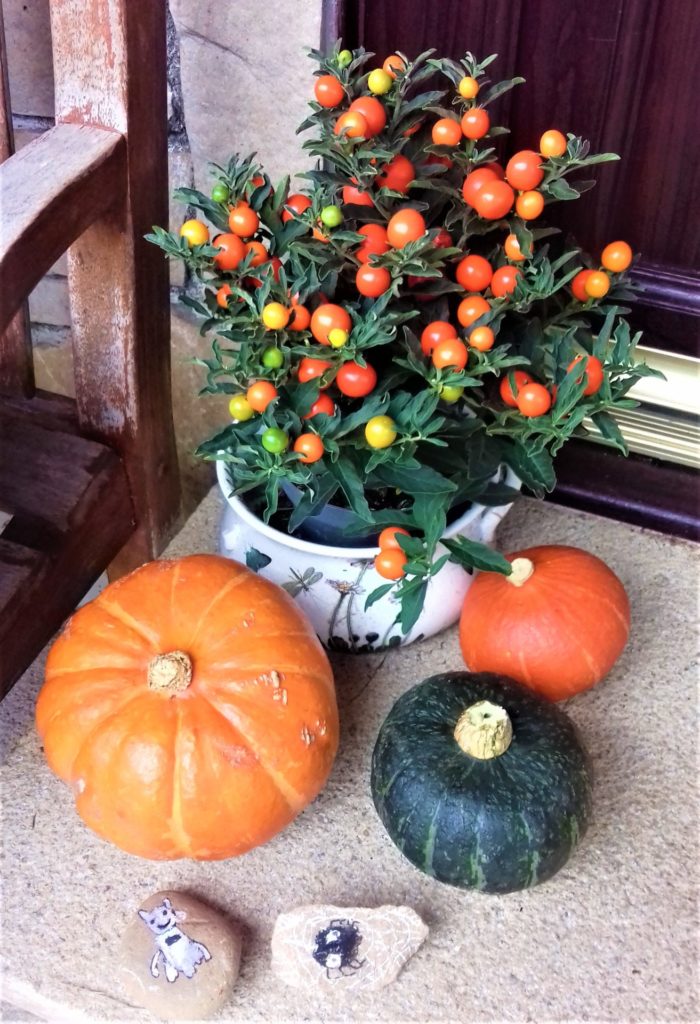
On a brighter note, in memory of my epic trip to the Hudson Valley NY last October, I’ve set up a colourful Halloween display on the doorstep. There were no chrysanthemums this year due to covid-19 so instead I bought a winter cherry, Solanus capicastrum, which is in the nightshade family. The leaves and berries smell just like tomatoes but are in fact toxic so I’ll need to bring the plant indoors in case any passing children are tempted to taste them. It is an indoor plant produced in The Netherlands for the Christmas season. The squashes will be turned into soup in due course. The doorstep stones with seasonal spider were painted by Jessica Gibbs a few years ago when aged about 8. On the left you can see a true likeness of a smiling Eric who is the Gibbs family’s corgi dog.
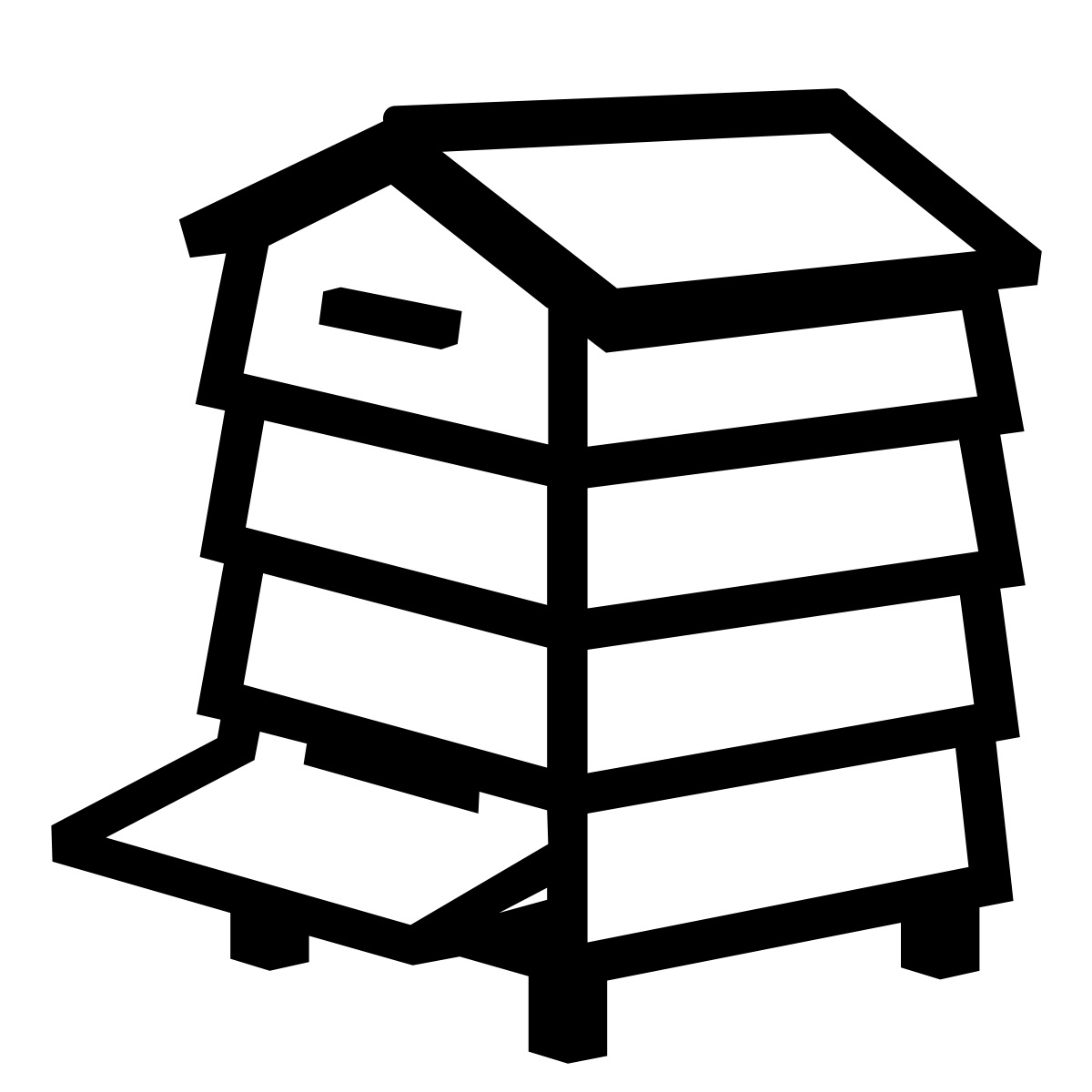

Well, boss, luckily for me too, I look forward to being organised for frame and foundation assembly…
Brilliant. I know that they will be well made and not fall apart when bulging with honey next season!
Yes, Ann, it is such a relief that the colonies are not being plagued by wasps this October. Jackie Elliot’s advice, to keep an eye out for queen wasp activity on the Cotoneaster horizontalis, was spot on 😉 . Thank you again for an interesting read.
Thank you Margaret Anne, and also for the last tip. Wigglesworth arrived yesterday!
Fascinating, Ann, thank you. In early October I had left a couple of supers out in a shed on top of a boiler to keep them warm before extracting. One day I came home for lunch and found thousands of bees trying to get into the shed. Some had obviously got in, because when I removed the supers a few days later, there were sadly hundreds of dead bees underneath the supers. I’m not sure why they didn’t get out again. Anyway, I then left the shed door open and for the subsequent days there were wasps coming in and systematically dismembering the dead bees. I watched from only inches away (with my EpiPen at hand!) and it was morbidly fascinating to see how quickly the wasps cut the heads off and flew away with them like a gory trophy. In fact, remembering back now, the bees had all been fighting with one another all over the shed floor and just outside it. Perhaps the dead bees on the boiler had been killed in battle. Some of them were not dead (and as you say in your post) wasps were cutting into barely live bees. I felt somewhat responsible for the death and destruction.
Welcome to Beelistener, Torquil, and thank you for sharing this first hand experience of the wasps in action. This is not something that I have actually seen but confirms what I thought had happened in my apiary. The supers on the boiler incident, or similar, is something that most of us will have done at some point in beekeeping and demonstrates just how quickly bees can enter through even the smallest entrance, and tell their nest mates about the discovered bounty. That’s the problem isn’t it, when you have harvested but are too busy to extract for a few days; where to store the supers in a warm bee-proof place? I’m lucky to have a bee-proof porch and if it is not warm enough I leave a heater on low.